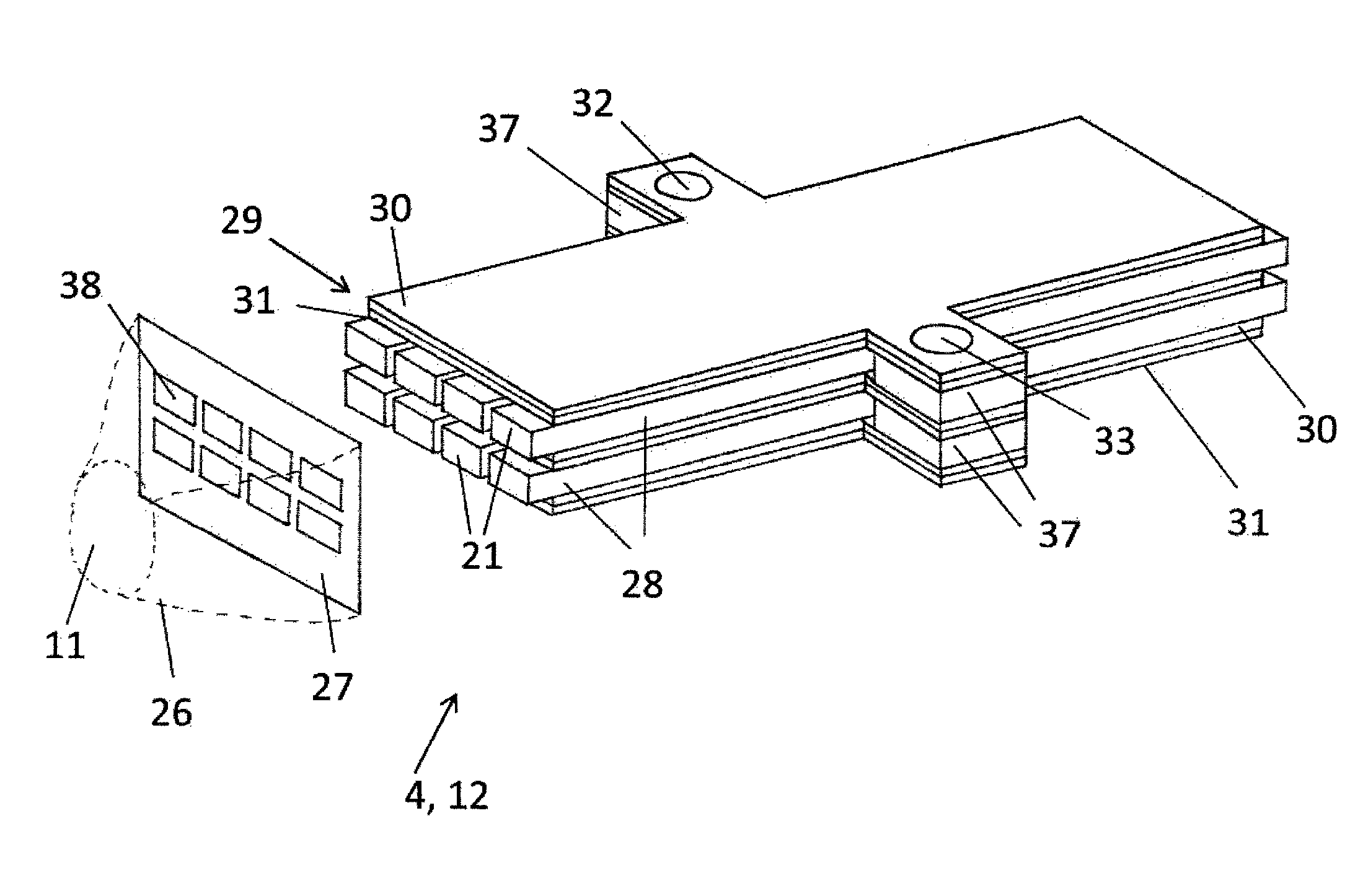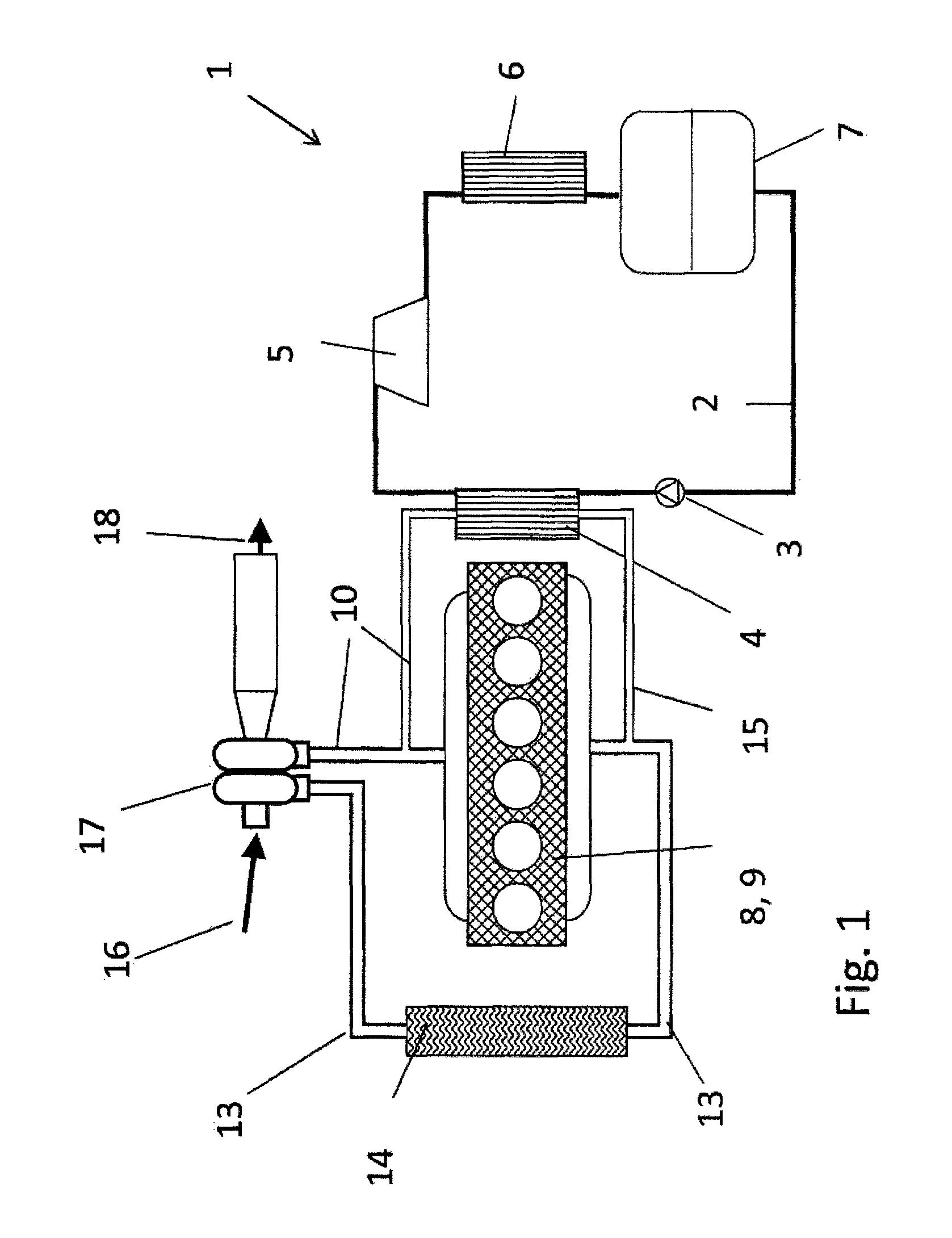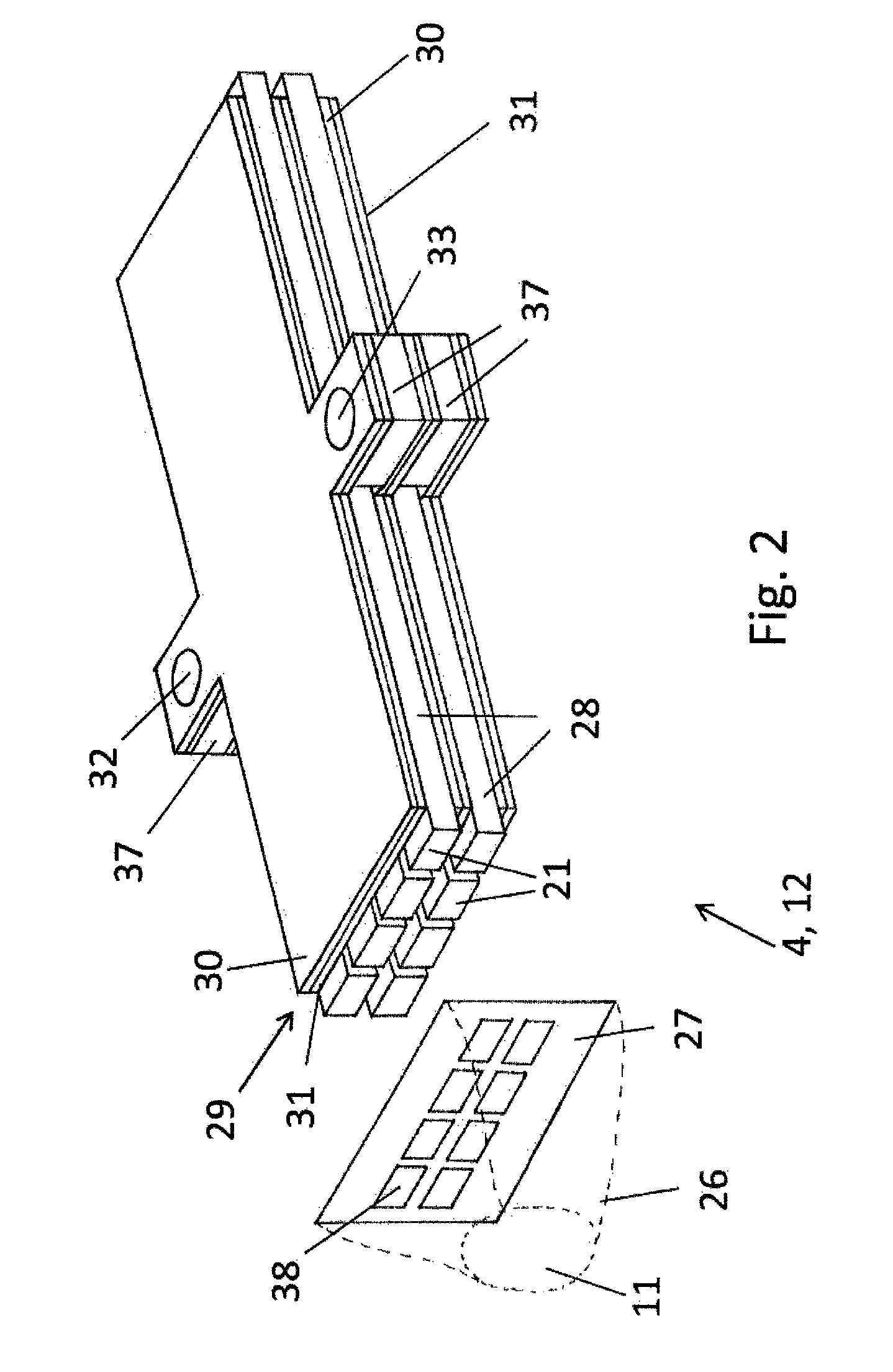Heat exchanger
a technology of heat exchanger and heat exchanger body, which is applied in the direction of machines/engines, lighting and heating apparatus, laminated elements, etc., can solve the problems of limited operating life of evaporator heat exchanger, high temperature changes in evaporator heat exchanger, and high thermal load on evaporator heat exchanger. , to achieve the effect of high thermal
- Summary
- Abstract
- Description
- Claims
- Application Information
AI Technical Summary
Benefits of technology
Problems solved by technology
Method used
Image
Examples
Embodiment Construction
[0036]An internal combustion engine 8 as an internal combustion reciprocating piston engine 9 is used to drive a motor vehicle, particularly a truck, and comprises a system 1 for utilizing waste heat from the internal combustion engine 8 by means of the Clausius-Rankine cycle process. Internal combustion engine 8 has an exhaust turbocharger 17. Exhaust turbocharger 17 compresses fresh air 16 in a charge air line 13 and a charge air cooler 14, built into charge air line 13, cools the charge air before it is supplied to internal combustion engine 8. A portion of the exhaust gas is conducted away from internal combustion engine 8 through an exhaust gas line 10 and then cooled in an evaporator heat exchanger 4 or heat exchanger 12 as an EGR cooler and with an EGR line 15 combined with the fresh air supplied to internal combustion engine 8 with charge air line 13. Another portion of the exhaust gas is introduced into exhaust turbocharger 17, in order to drive exhaust turbocharger 17 and ...
PUM
 Login to View More
Login to View More Abstract
Description
Claims
Application Information
 Login to View More
Login to View More - R&D
- Intellectual Property
- Life Sciences
- Materials
- Tech Scout
- Unparalleled Data Quality
- Higher Quality Content
- 60% Fewer Hallucinations
Browse by: Latest US Patents, China's latest patents, Technical Efficacy Thesaurus, Application Domain, Technology Topic, Popular Technical Reports.
© 2025 PatSnap. All rights reserved.Legal|Privacy policy|Modern Slavery Act Transparency Statement|Sitemap|About US| Contact US: help@patsnap.com



